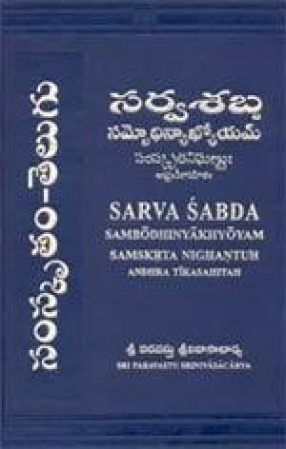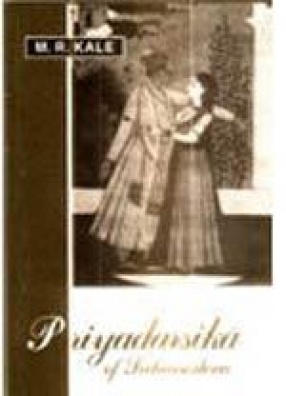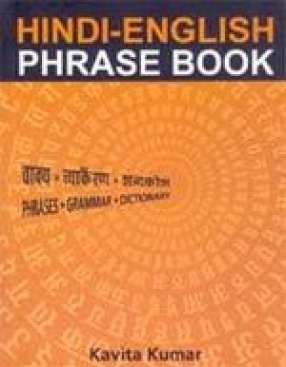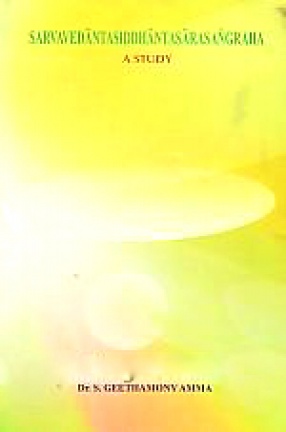This publication is no new idea. The want of a complete Dictionary in the Sanscrit language similar to those numerous works in the European languages has been long felt. The famous Amara Kosha merely gives the synonyms of the Gods & Godesses of the Earth, Hills, Forests, Cattles, Birds, Castes and of Ambiguous words with a few others, without any attempt at alphabetical arrangement. It was clearly never intended to serve the purposes of a Dictionary, and reference to any word out of even the limited number it contains, being most difficult, students would generally commit the whole to memory. The several compilations of more recent date, altho’ answering the purposes of a Dictionary better, are yet far from being sufficiently copious or complete. The Sanscrit English Dictionary by Mr. H.H Wilson, and the English Sanscrit Dictionary by Mr. M. Williams, are indeed valuable works of their kind; but their value is confined to those students who can understand both English and Sanscrit, and can afford to purchase such expensive works. It would appear the late Mr. Goday Sooria Pracasa Row felt the want of a work similar to the present whilst studying Sanscrit himself, and in latter years, when a perfect knowledge of the English language and association with English friends enabled him to engraft into Hindu life the improvements of the Western arts and sciences, he conceived the idea of a Sanscrit Dictionary compiled after the European model, and found in his own Preceptor a Scholar competent to the task. Sriman Parvastu Srinivasa Charyulu Ayavarlungaru who was one of the most renowned Sanscrit Scholars of his time undertook the work; but unfortunately as he was approaching its completion–only words beginning with the last four or five letters of the alphabet remaining to be added–he died, and for want of a competent Pandit to succeed him in the task, his own sons being of tender age, Mr. Pracasa Row who died about nine years later or on the 1 February 1841, had not the satisfaction of seeing the work finished. Mrs. Sooria, who was a model of wife and mother in the Northern Circars, being anxious to carry out, in every thing, the wishes of her late husband, succeeded in getting the work completed so soon as Sriman Venkata and Ramanuja Charyulu Ayavarlungarulu, the sons of the late Srinivasa Charyulu Ayavarlungaru were able to undertake the task; but neither herself nor her daughter the late Mrs. G.L. Narsing Row, who, combining with the privileges of nature the advantages of education, was an ornament to the ladies of her class, lived to see the present publication. This duty has devolved upon the publishers as near and dear relatives of the original Projector. All that they have done was to simplify the arrangement of the work, bringing it nearer to the European models, as also to add to the number of words by comparing it with the famous Sabthaculpathrooma and other similar standard works. The original arrangement was rather peculiar; the words were indeed arranged alphabetically, but each class of words beginning with the same letter was laid down according to syllables, and each of these sub-divisions was again arranged with respect to the terminal consonant, so that words of one syllable would be given first, and amongst them words ending with or the first consonant would hold the first place, words ending with the second consonant or the second place and so on. Then words of two syllables would be given likewise; then words of three syllables and so on. Therefore to find out the meaning of a word given, one would first have to see with what letter the word begins, then the number of its syllables and finally what is the last consonant in the word. The acknowledgements of the publishers are due to Sriman Parvastu Ramaya Charyulu Ayavarlungaru who carried out the re-arrangement work until the letter and to Koopily Coopiah Patnaikulu who completed the work, also to Mandayam Singara Charyulu Garu, the Head Cashier of the Bank of Madras, whose name is closely associated with the Sanscrit School at Madras, called Veda Vedanta Verdhani, and with several other charitable works, for his kindness in seeing this Dictionary through the Press; and chiefly to the Honourable D.F. Carmichael who amidst his onerous duties has very kindly under-taken to exercise supervision in the publication.
Priyadarsika of Sriharsadeva
$9.00
$10.00





There are no reviews yet.